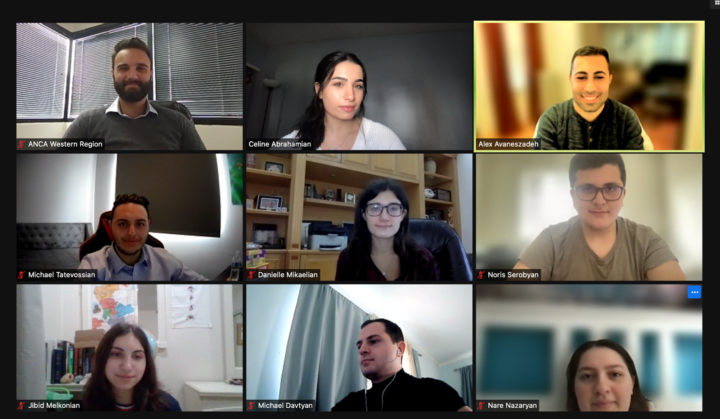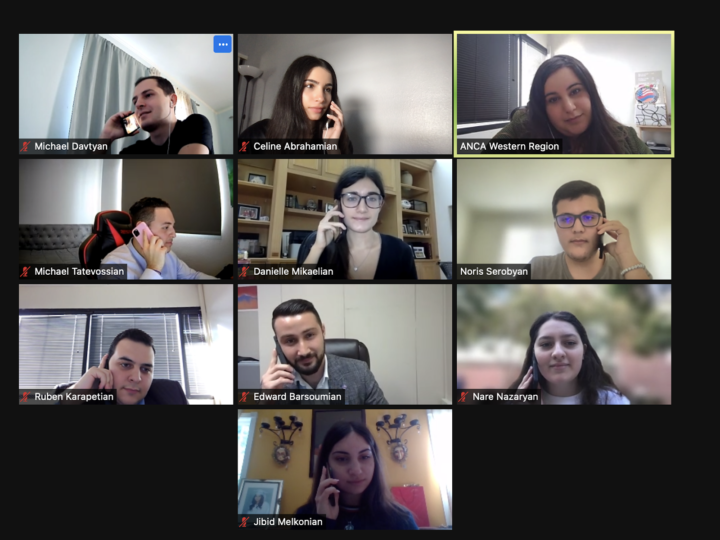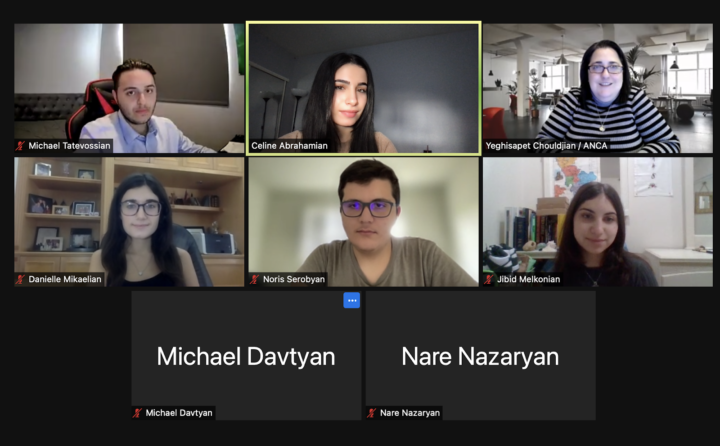Celine Abrahamian
On November 16, 2021, the start of the ninth week of the program, ANCA-WR Government Affairs Coordinators Edward Barsoumian and Ruben Karapetian joined our zoom to lead a training day. A few hours prior, Azerbaijan launched its largest attack on Armenia since last year, killing 15 Armenians and capturing prisoners of war. We briefly discussed the 2020 attacks on Armenian civilians led by Turkey and Azerbaijan and how US tax dollars are aiding these attacks to continue.
Each intern was assigned multiple US Senators. We then began calling their District and DC offices to expedite the process and push through a piece of legislation to remove all US funding to Azerbaijan. Our main priority was to urge Senators to cosponsor and vote for Amendments #4177, 4283, and 4713 to the FY2022 National Defense Authorization Act. These would not only cut military aid but also investigate their committed war crimes. We got ahold of staffers that worked in each office and left voice messages for those we couldn’t reach.
On Friday, November 19, we were joined by guest speaker Alex Avaneszadeh who presented on the Transnational Political Resistance Project. He began by introducing us to Armenian traditional dance and explained the history of its politicization. Ethnic Armenian Folk dance has always been a form of expression that conveys the customs and circumstances of Armenian life. It started as an expressive culture that rejected the Soviet idea and later shifted its focus to preserving and recreating Armenian culture. The movement originated in Armenia through fieldwork and the compilation of music and dance material. It spread across the world through different diaspora communities. The interns got an opportunity to share their take on the different ways Armenian culture is expressed.
On Tuesday, November 23, we had the opportunity to hear from Elizabeth Chouldjian, the Communications Director of the ANCA Washington DC Office. We started by introducing ourselves and discussing what we had been individually working on during the internship program. I briefly spoke about the work I was doing for the Impact Media Institute, updating the interns on my resource development and profile building for Bangladesh. As it was a few days before Thanksgiving, we went around and shared a few things that we were thankful for this year.
As communication plays a vital role in the ANCA and most other organizations, our presentation focused on “Communicating the Cause.” There is a lot of value in the communication component of a project, creating opportunities and inspiring action. Clear communication can encourage recruitment, educate people outside of an organization, and motivate them to join your efforts. The two types of communication are direct and indirect. While direct communication relies on in-person, online, and social media interactions to relay information, indirect communication is through traditional media methods. Organizations design strategies that evaluate these options and plan steps to achieve their communication objectives. The ANCA incorporates communication in its work when advocating for Armenian causes. They rely on the media to educate the community on current issues and to promote advocacy strategies.



